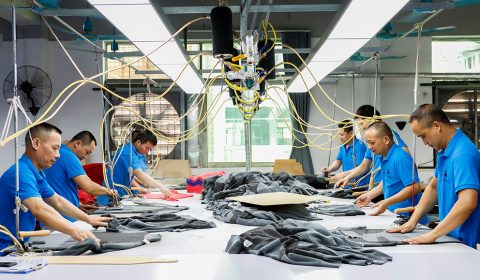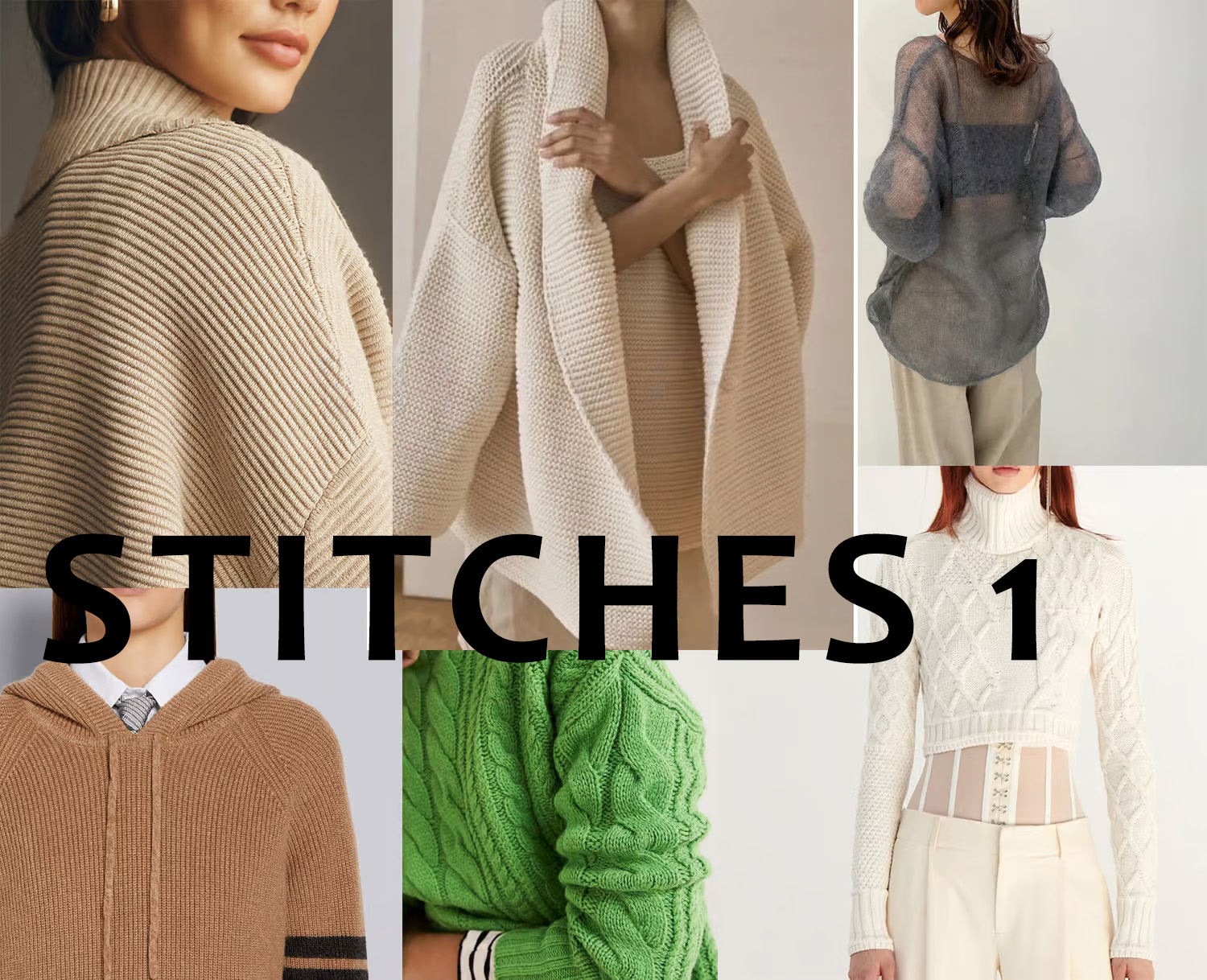As a precious fiber material, cashmere has a long history and originated from the ancient textile tradition. This natural wonder is produced from the wool of sheep, which is usually cultivated in cold climates to produce a more delicate, soft fiber. What makes cashmere unique is its excellent thermal properties, making it a favorite material for high-end textiles and fashion brands.
Cashmere is not one-size-fits-all; its texture, color, and use vary by sheep breed, geography, and climate. In this diverse world, various types of cashmere bring different choices to the market. From the vast steppes of Mongolia to the steep uplands of the Himalayas, cashmere in each region has developed uniquely in its own climate and ecosystem, resulting in distinctive varieties.
Mongolian cashmere
Mongolian cashmere originated from the Mongolian grasslands, and its unique feature is the cold climate, which makes the wool of Mongolian sheep grow more slowly and the fibers are more delicate. This natural slow growth gives Mongolian cashmere its excellent softness and thermal properties, making it an ideal raw material for very high grade woolen fabrics.
Mongolian cashmere is one of the most valuable fibers in the world and comes from a special breed of sheep in Mongolia. This cashmere is known for its excellent quality and unique production environment.
Due to the constraints of the growing environment, the yield of Mongolian cashmere is relatively low, making it an extremely scarce and valuable fiber. Its cashmere products are often known for their extremely high quality and unique fiber characteristics, and have become a highly sought after darling in the luxury market.
Tibetan cashmere
On the plateau at the roof of the world, Tibetan cashmere is a precious and unique variety of cashmere. Tibetan sheep, which grow in the Himalayas and the Tibetan Plateau, are adapted to the cold, plateau climate, and this extreme environment makes their cashmere unique. High altitude, low temperature and dry climate provide ideal living conditions for Tibetan cashmere. Tibetan cashmere is mainly distributed in Tibet, Qinghai and other places, the special climate and geographical conditions in these areas have formed a unique Tibetan cashmere production environment.
Tibetan cashmere is highly regarded for its fine, soft and warm properties, which makes it widely used in the textile industry. Its fiber fineness is low, usually between 13-16 microns, which is finer than the average wool fineness, so it has better feel and comfort. Tibetan cashmere is unique in that its long and fine fibers make the fabric softer, smoother and more delicate to the touch.
In textiles, Tibetan cashmere is widely used in the production of sweaters, scarves, blankets and other high-end clothing products. Due to its natural luster and softness, Tibetan cashmere products often appear luxurious and elegant, becoming a favorite material for fashion brands. At the same time, Tibetan cashmere is also used in outdoor clothing in cold regions due to its excellent thermal properties, providing a warm and comfortable experience for the wearer.
In general, Tibetan cashmere is notable for its special qualities cultivated in a unique environment, as well as its excellent application in textiles. This precious fiber variety not only embodies the natural beauty unique to the plateau region, but also brings a unique quality to fashionable and comfortable clothing.
Himalayan cashmere
The Himalayas, this breathtaking natural barrier, not only geographically connects South and West Asia, but is also the birthplace of some unique fibers. Among them, Himalayan cashmere is a unique product of this mysterious region.
Located in Nepal, India, Bhutan and other countries in the Himalayas, the altitude is extremely high, the climate conditions are changeable, forming an extremely harsh environment. These geographical and climatic characteristics provide ideal living conditions for Himalayan goats, prompting them to grow one of the softest and most valuable cashmere in the world.
Himalayan cashmere is known for its excellent fiber properties, making it highly regarded in the fashion and textile industry. First, its fibers are extremely fine, usually between 16 and 18 microns in diameter, far less than the diameter of ordinary wool. This makes the Himalayan cashmere fabric feel extremely soft, as if it is close to the skin.
Secondly, Himalayan cashmere has excellent thermal properties. Growing at high altitudes and low temperatures, these wools have a denser fiber structure that can lock in air more effectively, providing superior insulation. This makes Himalayan cashmere ideal for cool season fashion.
In addition, this cashmere has excellent moisture conditioning. It absorbs moisture quickly, keeps the wearer dry and comfortable, and maintains its excellent performance even in humid climates.
Angora cashmere
Angolan cashmere is mainly produced in the Angola region of Africa, where the climate and grassland conditions provide an ideal environment for the growth of Angolan sheep. The temperate climate and lush grasslands of the Angolan region provide an adequate food supply, which is conducive to the quality and growth rate of wool.
Angora sheep are usually raised in high-altitude grassland areas, where there is clean air and plenty of sunlight, which is very beneficial for the growth of cashmere. Breeders usually use well-designed fences and comfortable habitats to ensure that Angora sheep live in a safe and comfortable environment.
The breeding process of Angora sheep requires special attention and care to ensure that their hair remains of good quality. Breeders usually prune the wool regularly to maintain the fiber fineness and length of Angora cashmere. This careful care is the key to the high quality of Angora cashmere.
Angora cashmere is known for its excellent softness, mainly due to the special structure of its fibers. Angora wool fibers are very fine, thinner than normal wool fibers. This makes the Angora feel so soft to the touch that it feels like touching a cloud.
Due to its extremely fine fibers, Angora cashmere clothing provides excellent comfort. Wearing a sweater made of Angora cashmere, as if kissing the skin, is not only warm and soft, but also very skin-friendly. This makes Angora cashmere ideal for cool season fashion, bringing warmth and comfort to the wearer.
Kappa Ma cashmere
Kapama cashmere originates from the Peruvian highlands, where the high terrain and cold, dry climate provide ideal conditions for Kapama sheep. Located more than 4,000 meters above sea level in the Andes Mountains, the Peruvian plateau has extremely low temperatures and thin oxygen, creating a harsh and special natural environment. The Kappa ama sheep have evolved adaptations to the cold climate in this plateau region, giving their wool a unique texture.
The Kapama sheep on the plateau survive in the extreme climate, and their hair gradually develops into extremely fine and soft fibers. This adaptability has made the cashmere of the Kappa ama an extremely valuable raw material. This is also one of the reasons why Kappa Ma cashmere is highly regarded, because of its unique growing environment, the production of cashmere fibers show excellent quality.
Kappa ma cashmere is known for its delicate texture, and its fibers are finer in diameter, often finer than the diameter of a human hair. This makes the fabric of Kappa ma cashmere extremely soft and comfortable to the touch, as if it is the best of wool. The wearability of this softness makes Kappa ma cashmere the first choice for high-end wool products.
In addition, Kappa ma cashmere also expresses a high sense of luxury. Its fibers have a high gloss, showing a silky shiny texture, making the finished clothing or products have a high visual appeal. The luxury of Kappa Ma cashmere is not only reflected in the touch, but also in the appearance of the distinctive shine and texture, making it a favorite material for fashion brands and designers.




 English
English Deutsch
Deutsch Français
Français Italiano
Italiano Español
Español Русский
Русский Polski
Polski Nederlands
Nederlands Svenska
Svenska

